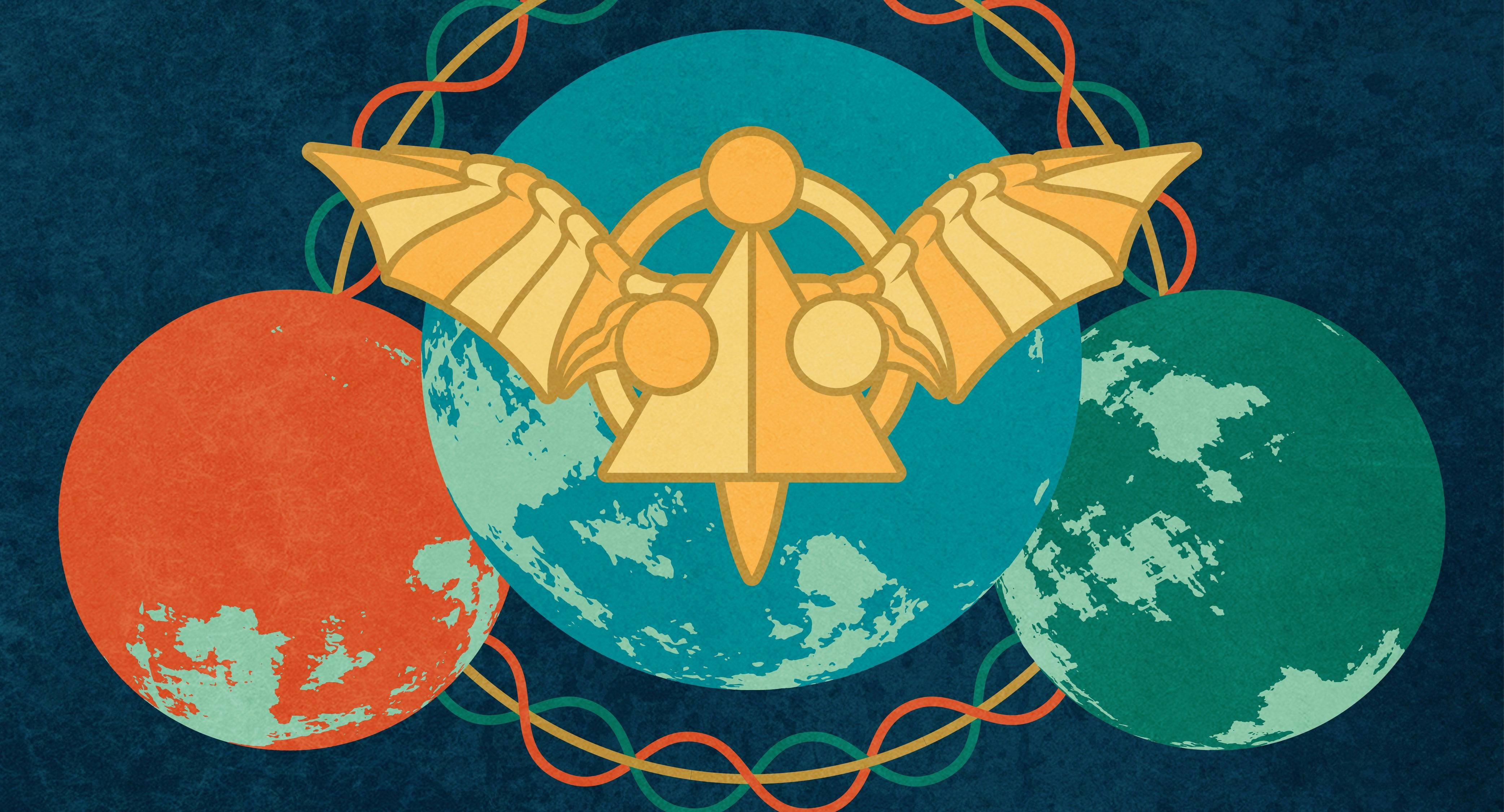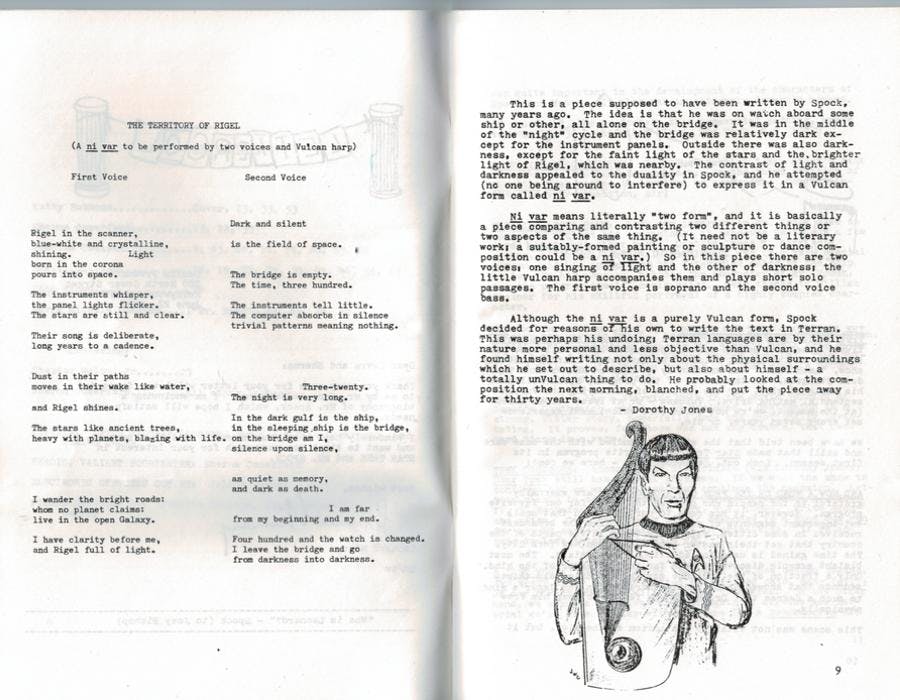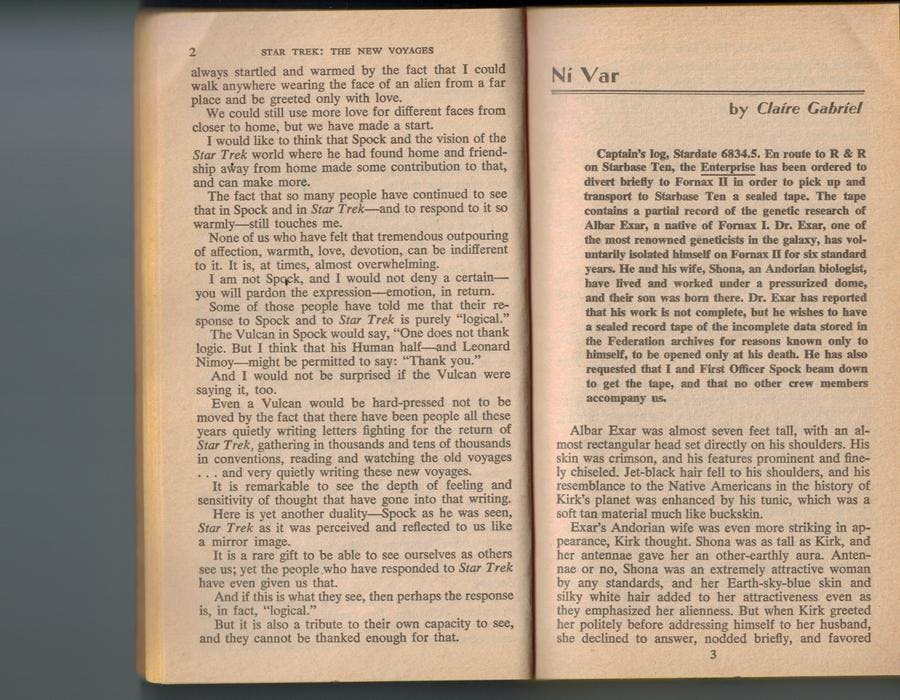Published Dec 1, 2020
With Ni'Var, Discovery Pays Homage to an Original Star Trek Fanzine
Vulcan's new name bridged Trek's fandom past with a new future.

StarTrek.com
In Star Trek: Discovery Season 3, Episode 7, “Unification III,” the crew visits perhaps, the most famous alien planet in all of Trek history. In Lower Decks, Mariner teased Boimler for counting Vulcan as one of the alien planets he’d visited — implying it was pretty much no different or exotic than visiting Earth. But in the new 32nd Century setting of Discovery, Vulcan is truly a strange, new world. And that’s because Vulcan isn’t Vulcan anymore, it’s now called the planet “Ni’Var.”
So, where did this name come from? Fans of Star Trek: Enterprise might have recognized the name “Ni’Var” from a specific Vulcan ship sent by the Vulcan High Command in 2151. And yet, that’s only the tip of the space iceberg when it comes to the deeper meaning and significance of this word. The origins of “Ni’Var” actually go all the way back to 1968, and the very first Star Trek fanzine, Spockanalia.
Episode Preview | Star Trek: Discovery - Unification III
Spoilers ahead!
The writer of Discovery’s “Unification III” was none other than Kirsten Beyer, a longtime Trek writer and producer, and co-creator of Star Trek: Picard. When asked about why she choose the name “Ni’Var” as the new designation for the Vulcan homeworld, Beyer said: “In researching what little we have of Vulcan language, I came across a reference to a Vulcan art form, “Ni var”, which essentially meant “two forms”; an object was examined from two different viewpoints or as having two different natures. It was coined by a linguist named Dorothy Jones, who wrote for some Star Trek fanzines in the late 1960s. I just thought it was beautiful, and captured perfectly what would be happening on Vulcan should they truly attempt reunification with the Romulans.”

StarTrek.com
Although “Ni var” would crop-up in several other fan works after Jones coined the term, its first appearance is in the first issue of the fanzine Spockanalia, published and edited by Devra Langsam and Sherna Comerford in 1968. The very first “ni var” — on pages 8 and 9 of that zine, and presented as a kind of song — is called “The Territory of Rigel” that Dorothy Jones imagines Spock singing with one other person. Jones describes her concept behind the “ni var” like this: “In this piece there are two voices: one singing of light and the other of darkness; the little Vulcan harp accompanies them and plays short solo passages.” Jones also established the idea that Beyer has rebooted; a Ni Var means “literally ‘two forms.”
The next prominent appearance of the concept of “Ni’Var” was in the short story of the same name written by Claire Gabriel, and most famously published by Bantam Books in the 1976 short-story anthology Star Trek: The New Voyages. Although sold in bookstores as an official tie-in Trek book, The New Voyages was, very much an outgrowth of the fan fiction culture, and the fact that a short story called “Ni’Var” was the first story in the collection is proof. In his introduction to the short story, Leonard Nimoy praised the concepts of duality presented by the notion of “Ni’Var” and wrote of Spock: “I was warmed by the fact that I could walk anywhere wearing the face of an alien from a far place and be greeted only with love. We could still use more love for different faces from closer to home, but we have made a start.”

StarTrek.com
This real-life quote from Nimoy fits in pretty perfectly with the flashback footage we see in Discovery of Spock from The Next Generation episode “Unification II” in which he tells Picard that the peace between the Vulcans and the Romulans “will be achieved,” and basically convinces Picard that what he’s doing on Romulus is just the beginning. In this way, there’s a bit of a Ni’Var going on in our own world. Leonard Nimoy was aware that Spock was making the real world a bit better back in the ‘60s and 70s, but that we still had a long way to go toward the future Star Trek imagined. In “Unification II,” Spock said pretty much the same thing to Picard: Things are getting better, but you have to give it time.
With “Unification III,” the use of the word Ni’Var to rename the new planet shared by Vulcans and Romulans is more than just a nifty Easter egg. It honors not just the history of Trek fandom, but also of the influence that fandom has had on the real world. The concept of the Vulcans and Romulans living together in peace is, at first, something Saru and Burnham can’t imagine. But, once they see the work that Spock did, it starts to dawn on them that the impossible is possible. As Spock says, the people of his time were struggling towards new enlightenment, and “it may take decades or even centuries for them to reach it, but they will reach it.”
In the new future of Star Trek: Discovery, Spock’s dream has been realized. And in having the Vulcan homeworld be renamed Ni’Var, the dreams of the first generations of Trek fans have been realized, too. Proving once again, as Star Trek so often does, that faith in a better future is a bet worth taking.
A Closer Look at Romulans
Ryan Britt's (he/him) essays and journalism have appeared in Tor.com, Inverse, Den of Geek!, SyFy Wire, and elsewhere. He is the author of the 2015 essay collection Luke Skywalker Can't Read. He lives in Portland, Maine, with his wife and daughter.
Star Trek: Discovery streams on Paramount+ in the United States, airs on Bell Media’s CTV Sci-Fi Channel and streams on Crave in Canada, and on Netflix in 190 countries.
